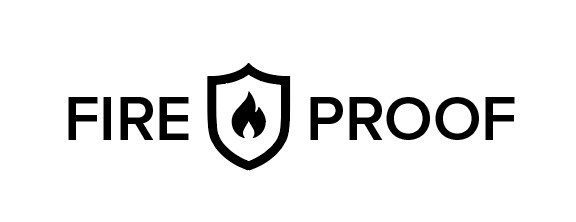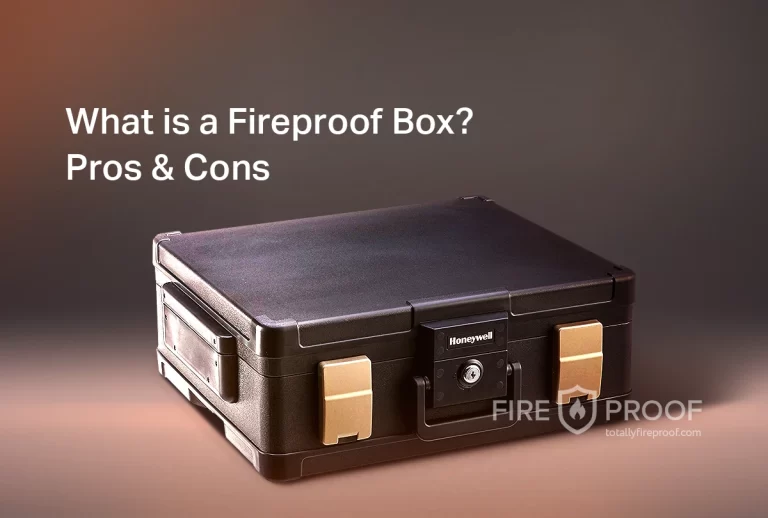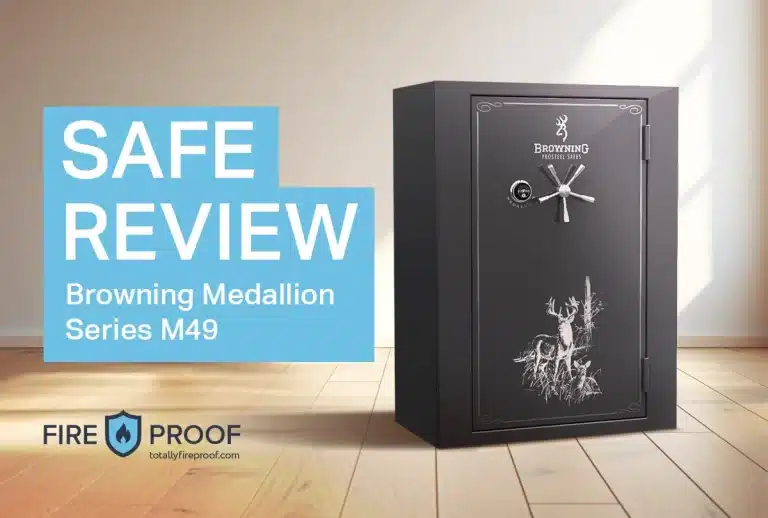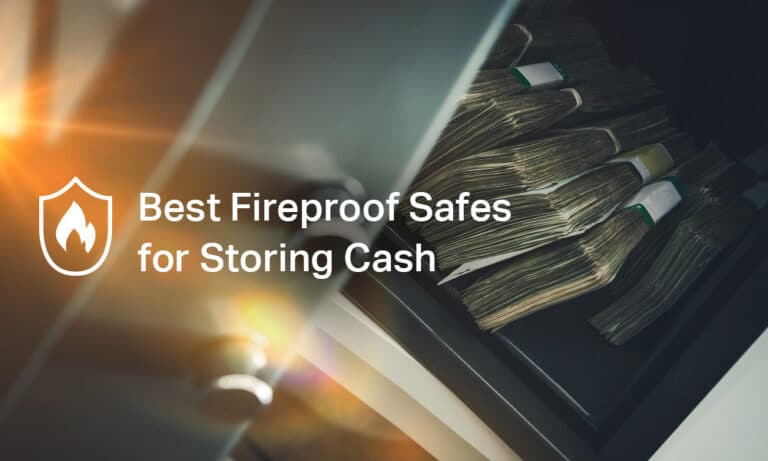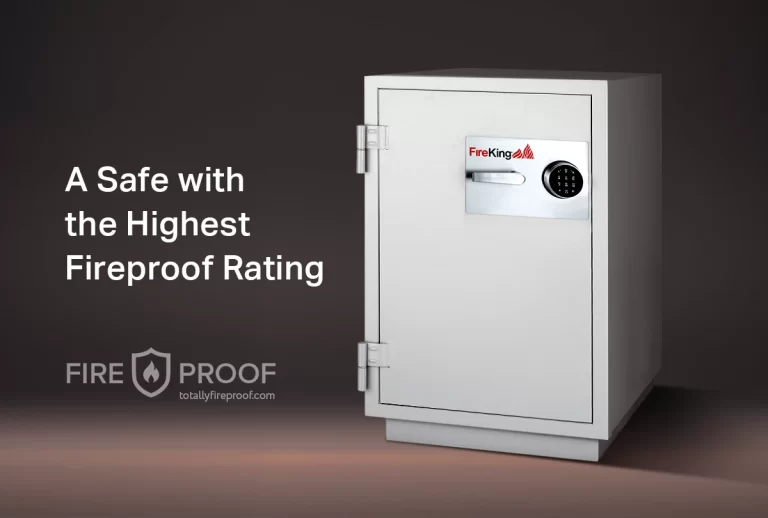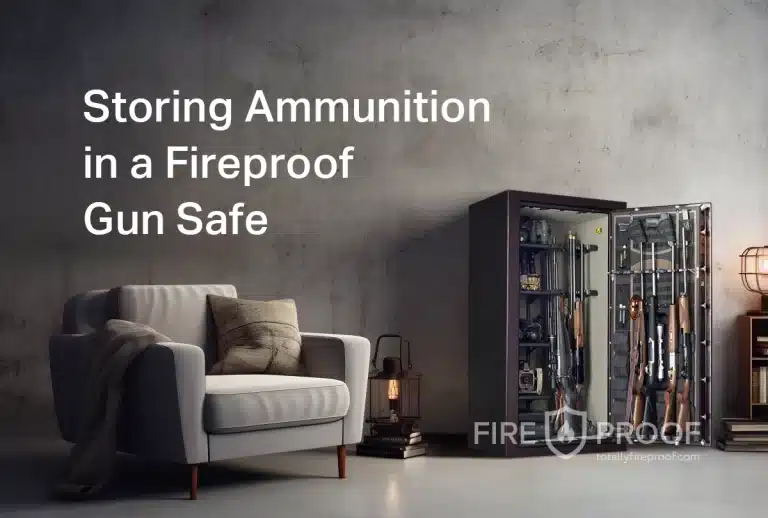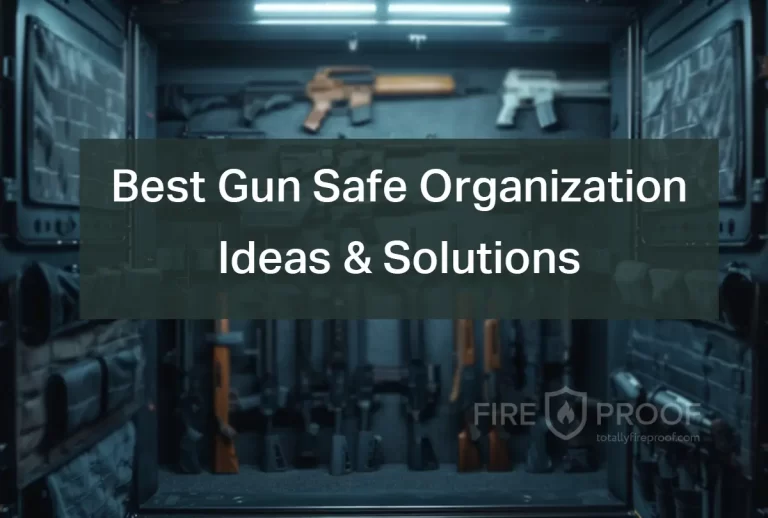Are Gun Safes Truly Fireproof?
The common perception is that gun safes are inherently fireproof. That this type of safes is like a jack of all trades and can protect from both theft and fire. However, is this really so? Are gun safes fireproof? The short answer is:
No gun safe is completely fireproof. Safes that advertise fireproof qualities actually only offer fire-resistance. Even then, for reliable fire protection you need a safe from a brand with proven record.
The term “fireproof” tends to create a sense of absolute protection, but in reality, it’s more about fire-resistance. Because given enough time and very high level of heat, everything will be damaged by fire. Fireproof gun safes are designed to withstand high temperatures to a certain extent only. It’s important to understand this nuance. We explain this and more down below.
Factors Affecting Fire Resistance
Gun safe fire resistance is determined by factors like:
- fire intensity (temperature and duration)
- safe placement
- Insulation type
- construction materials
Not all of these factors are within the manufacturer’s control as you can see yourself. Some depend on unforeseen events like fire strength. That’s why proper positioning away from flammables and using quality insulation can enhance protection. The material and build of the safe on the other hand directly influence its ability to withstand fire.
Speaking about various materials and construction designs that contribute a safe’s fire resistance. Here’s a break down for you.
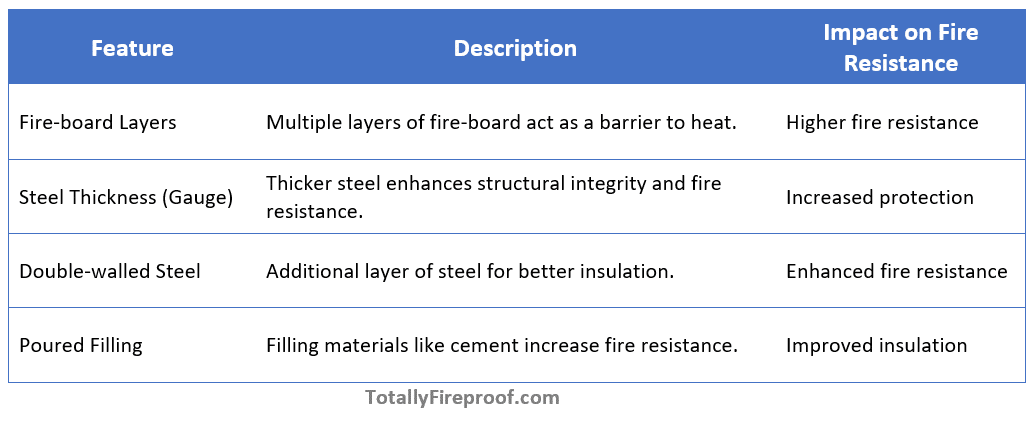
Understanding Safe’s Fire Ratings
The first thing you need to check when choosing a fireproof gun safe is its Fire rating. It is the key determinant of a safe’s capability to withstand fire and protect its contents from heat. These ratings serve as a benchmark for the quality and reliability of a particular model in fire situations.
Classes of Fire Ratings:
Fire ratings are categorized into different classes, mainly Class 125, Class 150, and Class 350, which shows the level of temperature a safe can endure while maintaining an internal temperature comfortable for the items stored inside. Here’s a breakdown of these classes:
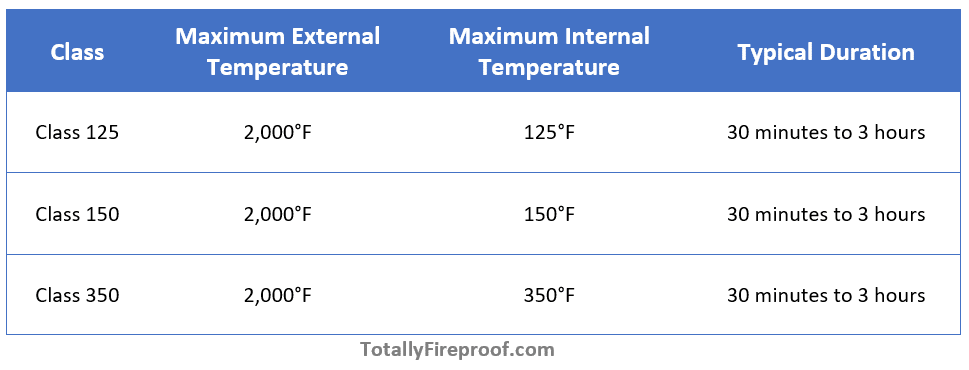
- Class 125: Optimal for protecting delicate electronic media and digital assets.
- Class 150: Suitable for protecting magnetic tapes and photographic film.
- Class 350: Designed to protect paper documents.
The fire ratings are followed by a duration, indicating the length of time the safe can endure the specified external temperature while keeping the internal temperature below the defined limit. For example, if you see in the manual or the product description that the safe has 1-hour Class 350 fire rating, it means that when exposed to fire the temperature inside the safe’s will not rise above 350°F for one hour.
Third-party Verification
Reputable third-party organizations, like Underwriters Laboratories (UL), provide standardized fire ratings, ensuring the reliability of the fire resistance claims. If such an organization has tested the specific model, and it passes the test, the manufacturer than can proudly put UL Fire Rating in the description. And you will see something like 1 hour UL Class 350 Fire Rating.
However, it is actually not easy to find a gun safe then went through such independent tests. Most companies prefer to conduct testing inside their own facilities and factories. And then it becomes a matter of trust in a specific brand and how diligent they are.
Fire Testing Process
The process of fire testing is thorough and aimed to simulate real world conditions. This is how they are conducted:
- Preparation: The safe is prepared for testing by placing sensitive materials or instruments inside to monitor the internal temperature.
- Heating: The safe is subjected to extreme temperatures, often heating a safe to 1200-1800 degrees or more in a controlled furnace. The furnace temperature in fire tests mimics real fire conditions, evaluating the safe’s performance under such scenarios.
- Endurance and Impact: The safe’s endurance to maintain an internal temperature below the critical point for the specified duration is tested. In some tests, safes are also subjected to impact assessments post heating to evaluate their structural integrity.
- Cool Down: Post heating, the safe is allowed to cool down, and internal temperatures are monitored to ensure they remain below the critical point.
- Evaluation: The data collected during the test is evaluated to determine whether the safe meets the criteria for the desired fire rating.
How to Choose a Fireproof Gun Safe?
So what gun safes can protect from fire on practice? When choosing such models, we recommend following these steps:
- Check the Fire rating: As mentioned above, the fire rating indicates how long the safe can withstand direct exposure to fire without the internal temperature exceeding a certain level. Choose a safe with a fire rating that is appropriate for your needs. If it is a UL approved rating, great! If not, read carefully what the manufacturer says about the testing process.
- Examine the Construction: Look for a safe that is constructed with a double-walled steel body and an insulating material in between the two walls. The insulating material will help to keep the internal temperature of the safe cool, even when the outside of the safe is exposed to high temperatures. Also pay attention to the wall thickness. The heavier and thicker the wall – the better they will protect from fire.
- Size and Weight can be a Factor: A heavier safe typically means more materials used to in its construction. And that typically leads to the higher durability and fire-resistance.
- Determine your Budget: Fireproof gun safes can range in price from a few hundred dollars to several thousand dollars. And as much as we would like to say that the cheaper models are as good as expensive ones, it is not true. The sheer material requirement will raise the price.
- Choose the reliable Brand / Manufacturer.While there are plenty of companies making gun safes, not many actually deliver on the advertised fireproof capabilities of their products. We recommend selecting a trustworthy Brands that have been on the market for quite some time and have proven themselves. Check brands like Hollon, Liberty Safes for example.
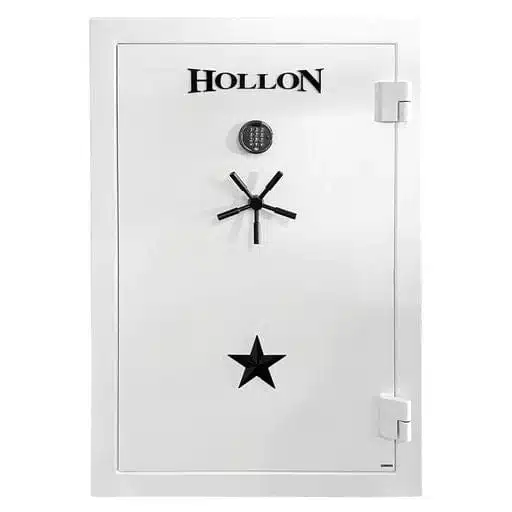
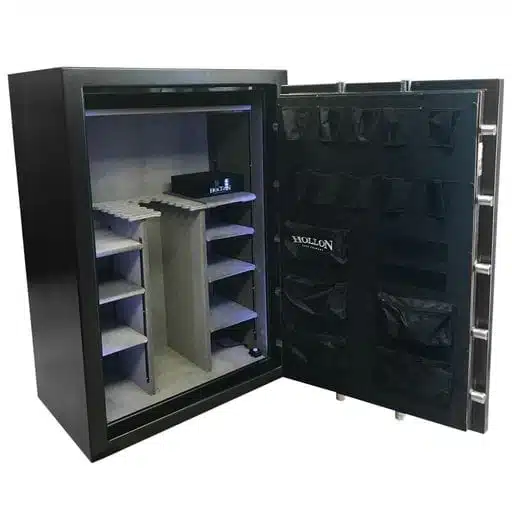
Enhancing Fire Resistance
Even with a fire-rated safe, there are additional steps that you can take to further enhance fire protection. Here are some tips:
- Remove Fire Hazards: Ensure that no flammable chemicals or materials are stored near the safe.
- Safe Placement: Place your safe on a non-combustible surface or a soft rubber mat which could provide an additional layer of insulation.
- Safe Area: Position the safe in a location less prone to high temperatures during a fire, like away from kitchens or fireplaces.
- Maintain Safe Surroundings: Keep the area around the safe clear of combustible materials to prevent additional fire hazards.
Conclusion
Understanding fireproofing in gun safes involves nuances. In real life situation it’s about minimizing risk and choosing safes tested by reputable firms. Fire ratings, validated by third parties, should be your main guide when purchasing a safe. Additional measures, like optimal placement and removing nearby fire hazards can enhance safety by a lot, so do not neglect them.
